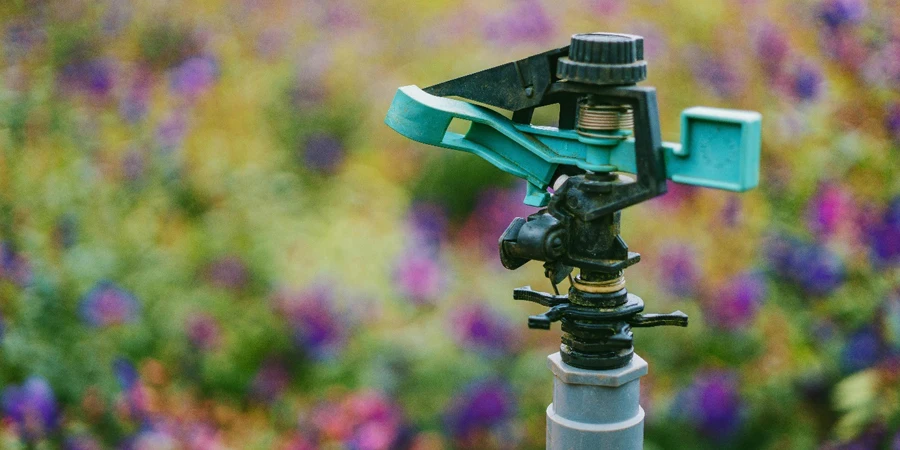Table of Contents
• Introduction
• Market overview
• Different types of garden sprinklers
• Things to consider when selecting products
• Conclusion
Introduction
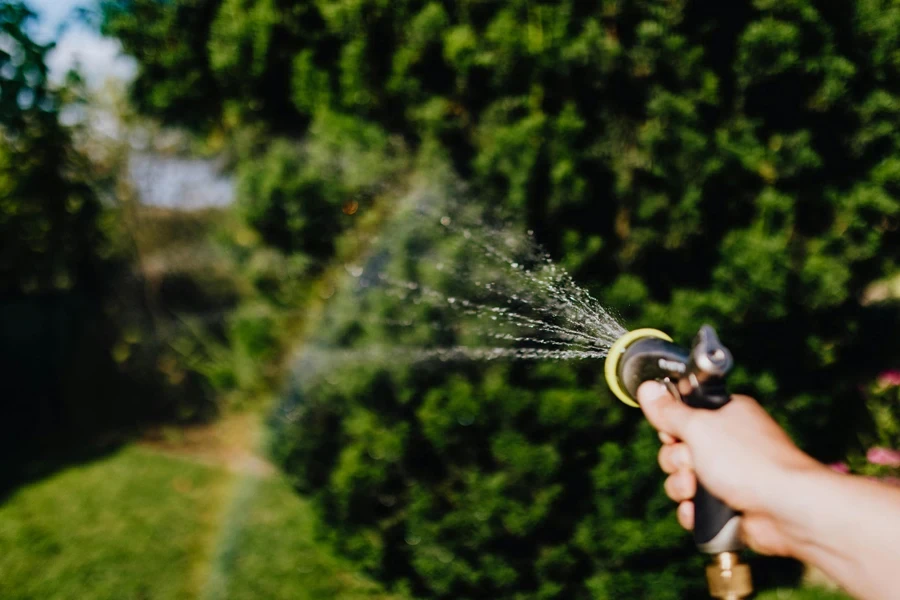
Selecting the right garden sprinkler is crucial for efficient garden maintenance, ensuring plants receive optimal water coverage. The growing market for garden sprinklers offers various advanced and sustainable options tailored to different needs. Understanding market trends and available types helps in making informed decisions. Considering factors like garden size, water pressure, and environmental impact is essential for effective irrigation. Investing in the right sprinkler enhances garden health and simplifies maintenance.
Market overview

Market scale and growth
The global garden sprinklers market is experiencing steady growth, with a projected increase from USD 2609.21 million in 2023 to USD 3446.47 million by 2032, according to market data. This represents a compound annual growth rate (CAGR) of 3.54%. Factors driving this growth include the increasing emphasis on water conservation, especially in regions prone to drought, and the rising adoption of automated irrigation systems. These technologies are particularly appealing due to their efficiency in water usage and their ability to minimize labor costs and maximize crop yields.
Changing trends
Technological advancements are a significant trend in the garden sprinklers market. Modern sprinkler systems are now equipped with sensor-based monitoring, variable rate irrigation, and remote control capabilities. Additionally, the integration of artificial intelligence (AI) and Internet of Things (IoT) technologies into sprinkler systems is enhancing their functionality, enabling real-time data analytics and predictive maintenance.
The market is also witnessing a shift towards sustainable and eco-friendly irrigation solutions. There is growing demand for drip irrigation and micro-sprinkler systems, which deliver water directly to the root zones of plants with minimal loss. This trend is driven by increasing awareness of environmental sustainability and the need to optimize water use amidst changing climatic conditions. North America and Europe are leading the market due to their advanced irrigation infrastructure and supportive government policies promoting sustainable agriculture.
Different types of garden sprinklers
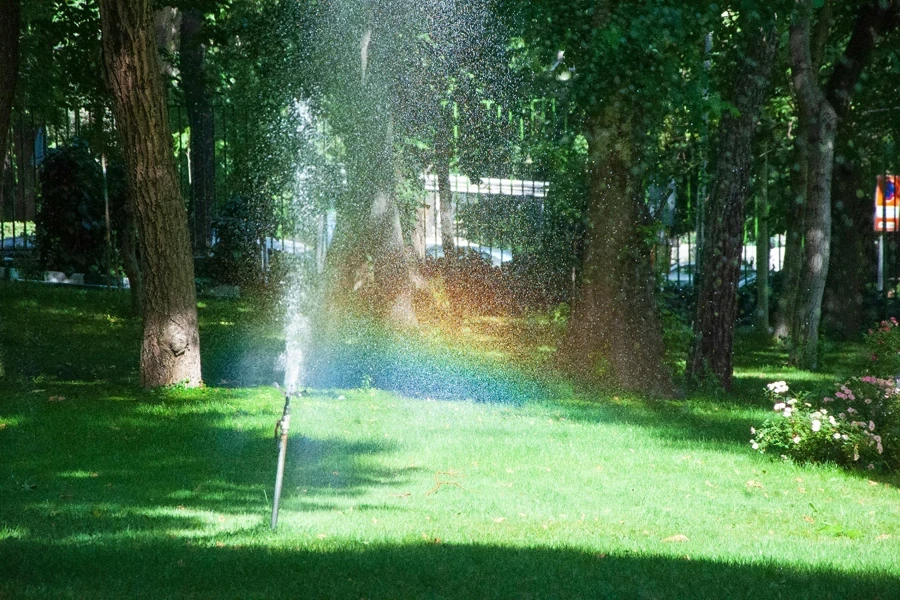
Fixed spray head sprinklers
Fixed spray head sprinklers are known for their precise water distribution, typically operating at a pressure of 20-30 psi (pounds per square inch). They can cover a radius of 5-15 feet, making them suitable for medium to large garden areas. These sprinklers come with adjustable nozzles that allow for various spray patterns, including full-circle, half-circle, and quarter-circle options. The ability to control the water flow rate, which can range from 0.5 to 4.0 gallons per minute (GPM), ensures that plants receive the optimal amount of water without wastage.
Rotor head sprinklers
Rotor head sprinklers are designed for extensive areas, with a typical operating pressure range of 30-70 psi. They feature a rotating head that delivers water in streams, covering distances of 15-50 feet. These sprinklers can be adjusted to cover arcs between 40 and 360 degrees, providing customizable coverage for irregularly shaped lawns. Rotor sprinklers often include gear-driven mechanisms for smooth operation and longevity. Many models come with a pop-up feature that rises 4-6 inches above the ground during operation and retracts when not in use, protecting them from damage.
Micro-sprinklers
Micro-sprinklers are highly efficient, operating at low pressures of 15-30 psi and delivering water at rates between 10 to 30 gallons per hour (GPH). They are ideal for small areas such as flower beds and vegetable patches, with coverage radii ranging from 2 to 10 feet. These sprinklers can be installed on stakes or mounted on risers to elevate them above plant height. They often feature adjustable flow rates and spray patterns, including 360-degree full-circle and 180-degree half-circle sprays, allowing for targeted irrigation that minimizes water loss.
Multiple-stream sprinklers
Multiple-stream sprinklers, often used for large lawns, operate efficiently at pressures of 25-50 psi. They feature multiple rotating nozzles that can cover areas from 20 to 40 feet in diameter. The multi-stream design ensures even water distribution across various terrains, including slopes and uneven ground. These sprinklers are designed to handle flow rates of 1-5 GPM, making them suitable for extensive lawn coverage. The streams can be adjusted for different patterns and angles, providing comprehensive irrigation that promotes healthy, green lawns.
Things to consider when selecting products
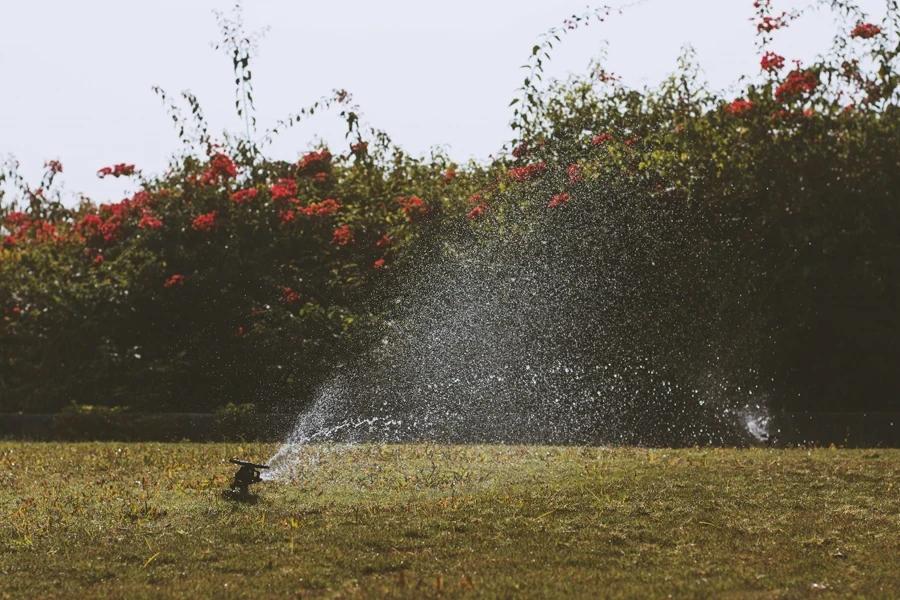
Garden size and shape
The layout and size of a garden dictate the type of sprinkler system that will be most effective. For larger gardens, rotor head sprinklers with adjustable arc settings (typically between 40 to 360 degrees) and throw distances of up to 50 feet are ideal. These sprinklers can efficiently cover vast areas with customizable water patterns. Conversely, fixed spray head sprinklers are more suitable for smaller, uniformly shaped gardens, offering a consistent spray radius of 5-15 feet. For intricate garden shapes or narrow beds, micro-sprinklers with 360-degree spray capabilities and coverage up to 10 feet in diameter provide precise irrigation without oversaturation.
Water pressure and source
Optimal sprinkler performance heavily depends on matching the system with the garden’s water pressure. Fixed spray head sprinklers typically require 20-30 psi, while rotor head sprinklers need 30-70 psi to operate efficiently. Ensuring the water supply meets these pressure requirements is crucial to avoid issues like poor coverage and inconsistent watering. For gardens with lower water pressure, selecting low-pressure sprinkler models designed to operate efficiently at 15-25 psi can help maintain effective irrigation. A reliable water source, whether from municipal supply or a well, is essential to support consistent and adequate watering schedules.
Sprinkler material and durability
Durability is a key factor in choosing garden sprinklers. Sprinklers constructed from high-grade materials such as brass, stainless steel, or UV-resistant plastics are preferred for their longevity and resistance to harsh environmental conditions. Brass and stainless steel components are particularly resistant to corrosion and mechanical wear, ensuring prolonged life even under continuous exposure to water and sunlight. UV-resistant plastic sprinklers offer a cost-effective alternative, providing durability against sunlight degradation and impact. Investing in robust materials reduces the need for frequent replacements and maintenance.
Automation and smart features
Incorporating automation and smart features into sprinkler systems can significantly enhance efficiency and ease of use. Automated sprinklers equipped with programmable timers allow precise control over watering schedules, ensuring plants receive water at optimal times without manual intervention. Advanced smart sprinkler systems integrate with home automation platforms and use sensors to monitor soil moisture, weather conditions, and plant needs in real-time. These systems can adjust watering schedules dynamically, reducing water wastage and improving plant health. Features like remote control via smartphone apps and integration with weather forecasts ensure that the garden is watered only when necessary, promoting water conservation.
Environmental impact
Choosing eco-friendly sprinkler systems is vital for sustainable gardening. Drip irrigation and micro-sprinkler systems are designed to deliver water directly to the plant roots, significantly reducing evaporation and runoff. These systems typically operate at low flow rates, ranging from 0.5 to 4.0 gallons per hour for drip lines and 10 to 30 gallons per hour for micro-sprinklers, optimizing water use efficiency. Smart sprinklers with weather-based controllers can adjust irrigation based on real-time environmental data, ensuring water is used only when needed. Additionally, incorporating rain sensors and soil moisture sensors can further reduce unnecessary watering, helping conserve water resources and reduce environmental impact.
Conclusion
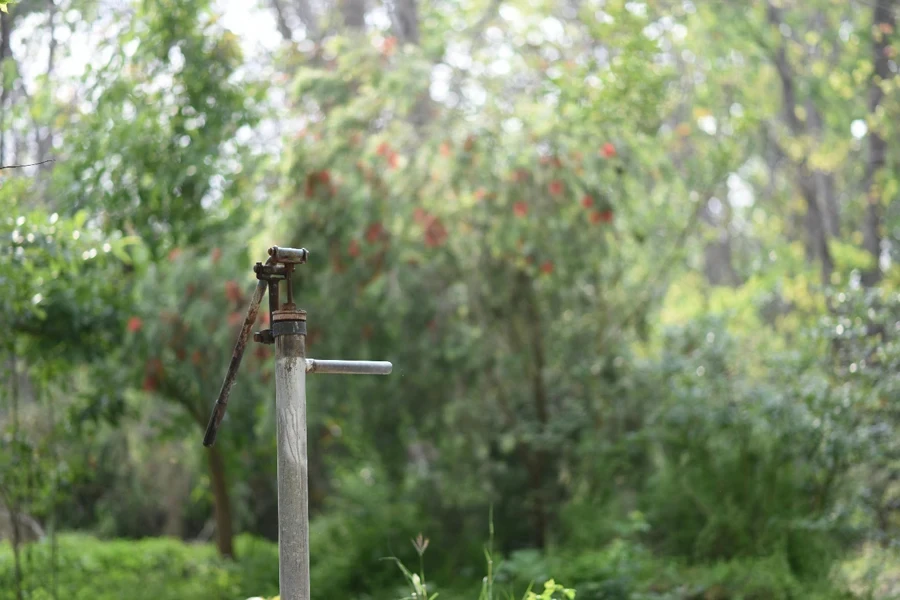
Selecting the appropriate garden sprinkler is crucial for optimizing water usage and maintaining a healthy, vibrant garden. By considering factors such as garden size, water pressure, material durability, automation features, and environmental impact, businesses can ensure they invest in systems that provide efficient and effective irrigation. This not only simplifies garden maintenance but also supports sustainable water management practices, ultimately leading to a flourishing garden landscape.
